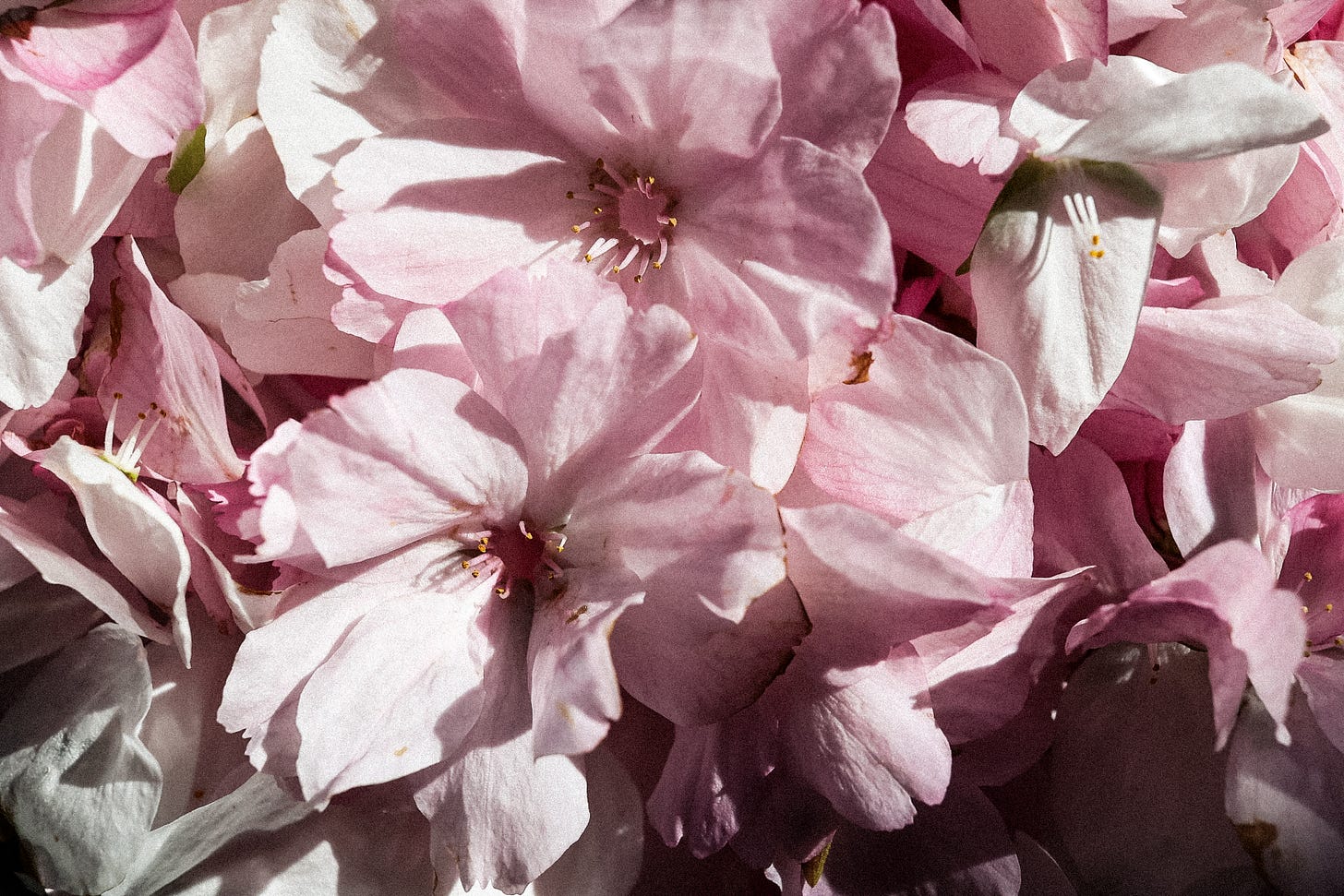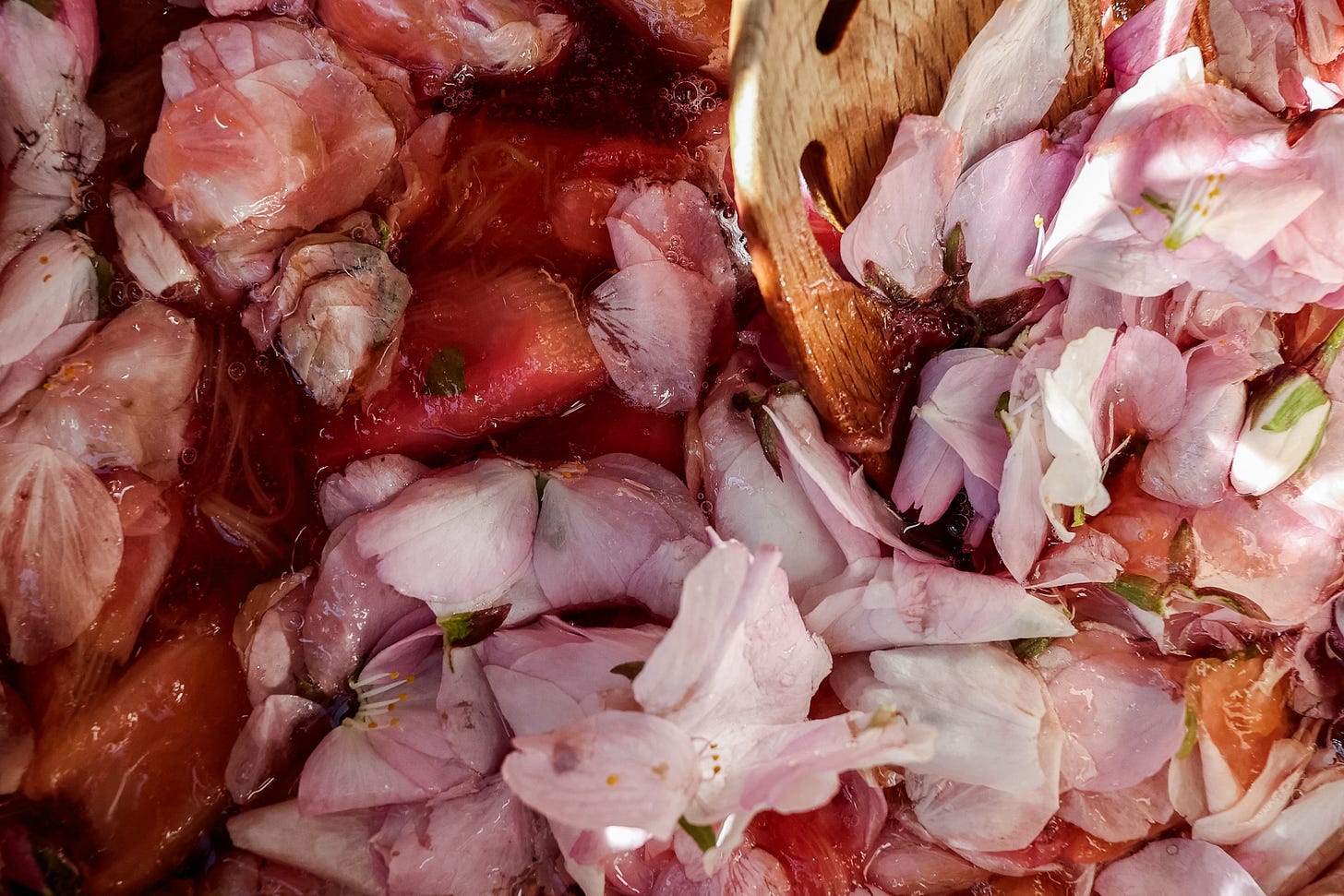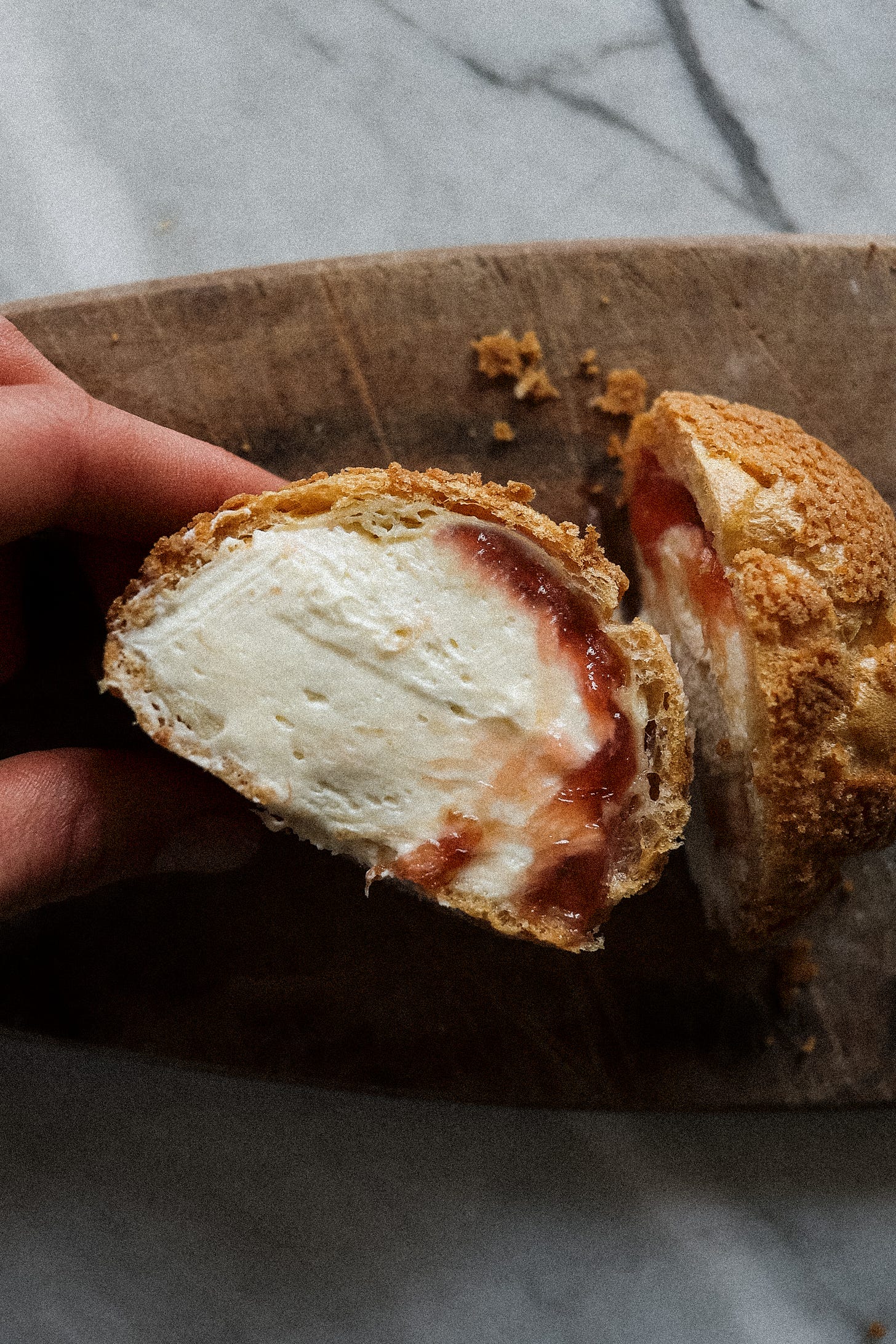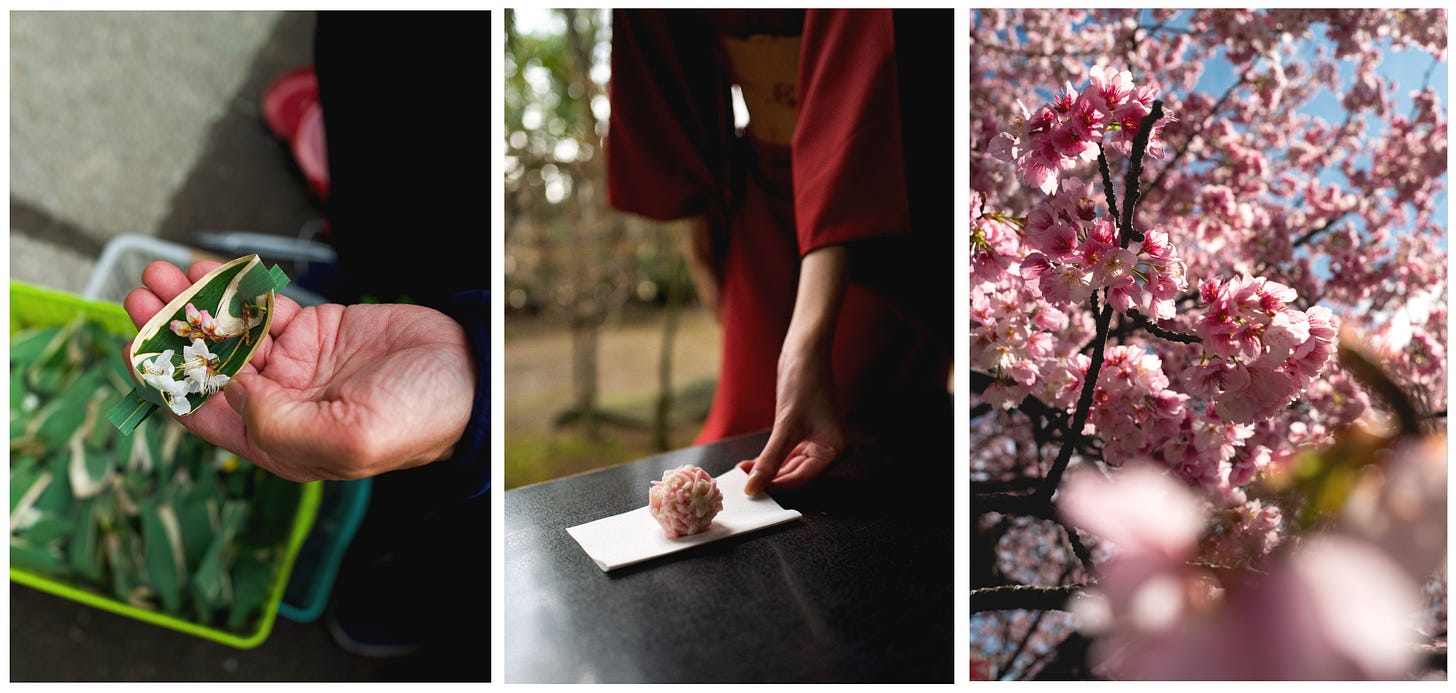Tickets for my April 25th supper club in London, Soil Stories, are now available here. This unique supper event will be unlike any I’ve hosted before and is close to my heart. It will be an evening of delicious food, a beautiful setting, and storytelling that digs deep. Expect an experience that nourishes more than just your appetite. I can’t wait to share it with you.
When cherry trees bloom for a fleeting week or two each spring, walking through Japan’s streets and parks is like floating through a billowing pink cloud. These sakura trees canopy across promenades and drape gracefully over ponds. Their petals drift in the breeze like confetti that collects along sidewalks as though a silent, city-wide party has taken place. Their almond and vanilla-perfumed blooms might even make you giddy.
In Japan, hanami, or flower viewing, is a centuries old tradition taken very seriously. These blossoms serve as an optimistic harbinger of warmer days to come and their fleeting nature is seen as a symbol of life's transience: like the blossoms, all living things will inevitably pass. Historically, Japanese elites would gather to drink wine and write poetry beneath the blooms. Over time, the tradition has evolved and today, people gather by the thousands to eat, drink, and enjoy the show. Colleagues join for post-work drinks, friends meet for picnics and walks, and weddings, festivals, and impromptu photo shoots are a regular occurrence beneath the blushing canopies.
The magic of blooming cherry trees spans beyond their beauty: they have a delicate fragrance ranging from vanilla and almond to floral and almost soapy. Once we discovered it during our visit, we couldn’t resist sticking our noses into clusters of blooms on each tree we passed for the remainder of our trip, comparing the scents from tree to tree. This fragrance also turns out to be the flavour of cherry blossom and during spring, it is showcased in sweets available across Japan: sakura mochi in various forms, sometimes delicately draped with a pickled cherry leaf, cream puffs filled with sakura custard, and blush pink sakura ice cream, all with a floral, marzipan-like flavour.
Similarly, this rhubarb and cherry blossom jam preserves the delicate essence of these flowers for enjoying throughout the year. Making jam is satisfying and shockingly easy, and the possibilities for using this one are endless: serve it on toast with butter or alongside cheese and crackers, stir it through yogurt to have with granola, sandwich it between tender layers of cake, or, as pictured here, use it as a filling for choux puffs alongside whipped cream for a dessert as light and ephemeral as the blossom-laden trees themselves.
Following the recipe, I’m sharing a guide to eating and exploring Japan based on the lovely places we discovered on our trip, with links to some of our favourites.
Rhubarb & Cherry Blossom Jam
Makes two 250ml jars
500g rhubarb, forced or field
75ml water
275g granulated sugar
Juice from ½ lemon
½ tsp salt
70g cherry blossoms (about 3 cups)
Remove any stems or leaves from your cherry blossoms and rinse them well with water, then drain. Thoroughly clean your rhubarb stalks and remove any leaves, then cut them into 2.5cm (1”) long pieces.
Add the rhubarb pieces and water to a heavy bottomed pot over medium heat and cook until the rhubarb becomes tender and begins to break down, 4-5 minutes. Once it has softened, add the sugar, lemon juice, salt, and cherry blossoms and bring to a boil. Boil until the jam reaches 105°C/220°F on a thermometer, stirring often to prevent sticking.
Turn off the stove and let the jam rest for 5 minutes before pouring it into warm, sterilized jars. Seal the jars immediately and let them cool completely before labelling and storing them somewhere cool and dry.
Notes: you can sterilize your jars/lids by running them through a dishwasher cycle or by boiling them for 10 minutes.
A Guide to Eating and Exploring in Japan
Having spent only a few weeks in Japan, this is not a thorough guide, rather a list of our the restaurants, bakeries, shops, and activities we loved and that I think are worthwhile. Reservations are good to have but (mostly) not essential, and you will almost certainly be able to find a great meal around you without one.









Hi Allegra! Thanks for sharing, I loved the pairing and your tour guide 🌸💮